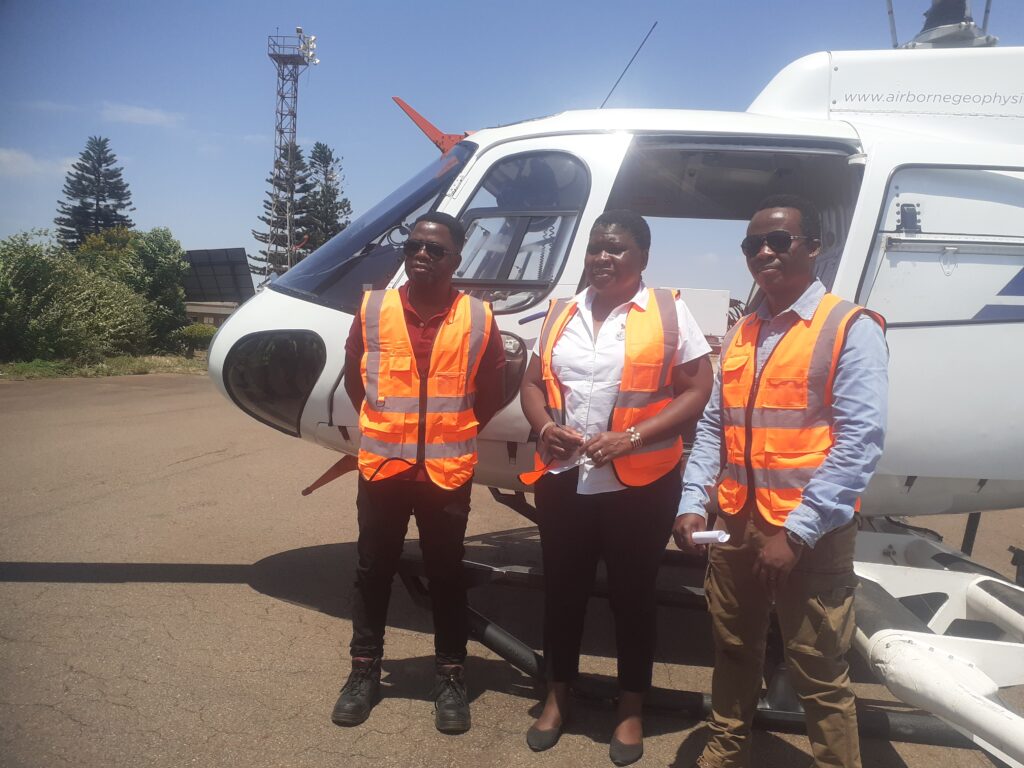
Mining
DY6 completes initial exploration programmes at Salambidwe rare earth prospect
May 09, 2024 / Marcel Chimwala

ASX-Listed resources group DY6 Metals says it has completed its initial geophysical and geochemical exploration programmes at its Salambidwe Rare Earth Exploration and niobium prospect in Chikwawa.
The exploration programmes included an airborne geophysical survey on Salambidwe, which is a virgin rare earth prospect with limited previous exploration, that was launched by Minister of Mining Monica Chang’anamuno.
CEO for DY6 Lloyd Kaiser reports that his company has received assay results for the grid-based soil and rock chip sampling, and results from the 128 soil and 386 rock chips expand the known area of anomalous responses.
Kaiser says in a statement that maximum values from separate rock chip samples were 1.21% total rare earths (TREO) and 0.12% Nb2O5 (Niobium Oxide).
He says the 45-line kilometre airborne geophysical program confirmed the highly concentric nature of the intrusive complex.
“DY6 is assessing the combined geochemical and geophysical data to refine targets prior to a maiden drill program,” Kaiser says.
DY6 undertook ground-based grid controlled geochemical sampling to confirm historical exploration results of previous holder of the tenement Globe Metals & Mining and to expand the footprint of anomalous responses.
Previous activity had not closed off the anomalous zones, nor had airborne geophysical surveys covered the area due to its proximity to the border with Mozambique. Globe completed a sampling and ground radiometric survey over part of the central ring complex area of the intrusion outlining several zones of strongly anomalous TREO and Nb responses, numerous zones extended to the limits of the sampling.
Kaiser explains that DY6’s sampling was specifically aimed at either extending or closing off these anomalous zones to the northern and western part of the licence
He says the area of the historical sampling was not resampled, but several traverses were made across the outlined anomalous areas to ensure consistency and coherency of results.
Kaiser explains that absolute values obtained from the DY6 exploration appear to be slightly lower in tenor than the historical data; which is interpreted that this is due to the majority of the DY6 sampling being peripheral to the historical sampling and extending away from the central anomalous area.
DY6 detailed sampling expanded the anomalous areas on 100m x 100m spacing and the more regional and confirmatory sampling was at 100m intervals along lines 500m apart.
Nb2O5 results also extended the anomalous areas tended both zones, though their extent is more limited than the TREO. The western zone is approximately 1,700m long (including outside tenure) and the eastern zone is approximately 1,500m long.
Kaiser says: “The expansion of the anomalous areas at Salambidwe creates an enticingly large target; the exploration team have done an excellent job in rugged terrain.”
“The company will define the priority targets for drill testing then review these in conjunction with the digital terrain data to ascertain accessibility.”































